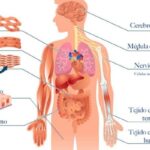We explain what human reproduction is, intercourse, fertilization and what the male and female reproductive systems are like.
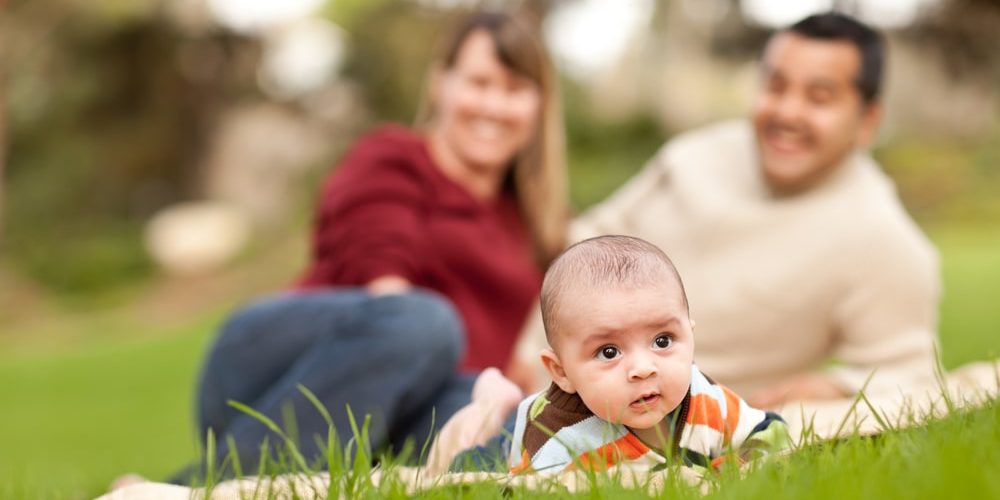
What is human reproduction?
Human reproduction is the set of complex biological and biochemical processes that allows two human beings of different sexes (man and woman) to conceive a new individual belonging to the species, that is, to reproduce.
To do this, human beings have a specialized reproductive system in our bodies, which matures and develops throughout puberty, and which is physically and biochemically different depending on the sex of each individual. So, in order to reproduce, two fertile, adult and fully developed human individuals are needed.
As indicated by the presence of two clearly distinguishable sexes, human reproduction is sexual: It is produced by the union of germ cells from both parents (called gametes: female eggs and male sperm), which have half of the genetic information of each individual, assigned completely at random.
These cells are produced in the sexual organs. Thus, when joined together, the two halves they create a totally new genetic information or genome unique and unrepeatable, which will be that of the new member of the species.
From that moment on, the new human being grows inside the mother's womb, until it has developed enough to begin to live independently. It is then expelled from the uterus through the birth canal, in what we commonly know as being born.
The stages of human reproduction are: intercourse, fertilization, pregnancy and childbirth. We will see them separately later.
See also: Plant reproduction
Male reproductive system
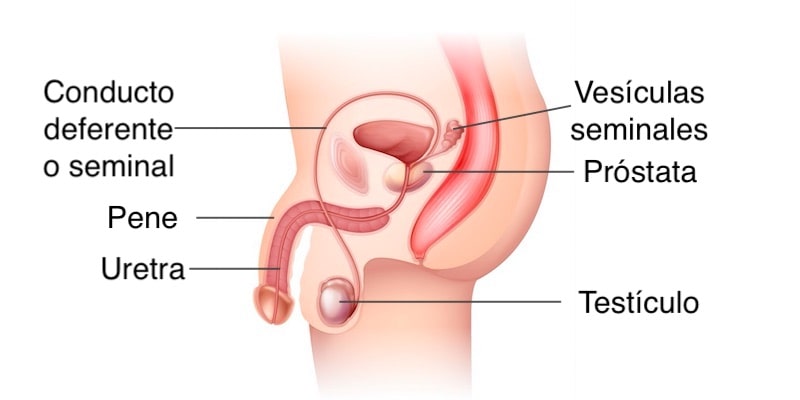
The male members of the human species have a reproductive system made up of the following organs:
- The penis. A cylindrical and external organ, of an erectile nature, that is, it can be flooded with blood and expand its size several times, until obtaining a hard consistency, ideal for entering the vagina, in what we know as penetration. Its mission will be to deposit the sexual cells there, so that fertilization can occur.
- The testicles Two large glands located below the penis, also on the outside of the body, and connected to it through a series of ducts. They produce sexual cells, sperm, which are very active cells equipped with a flagellum, that is, a tail for swimming. Additionally, testosterone is produced in the testicles, the male hormone that, during puberty, triggers the physical and organic changes necessary for the male body to mature sexually. As if that were not enough, that same hormone is responsible for male sexual desire.
- The prostate. A gland the size of a walnut, located very close to the bladder in the body of men, whose function is to produce the different compounds that make up semen, a whitish liquid, a mixture of biochemical substances, in which sperm travel and from which they take everything necessary for their nutrition and sustenance.
- The seminal vesicles. Also called seminal glands, they are located above the prostate, to which they are attached, and are responsible for producing around 60% of the liquid that makes up semen, called seminal fluid.
- The seminal ducts and urethra. Which are the ducts that connect everything and allow, when the time comes, semen full of sperm to flow out through the urethra, culminating in the tip of the penis.
Continue in: Male reproductive system
female reproductive system
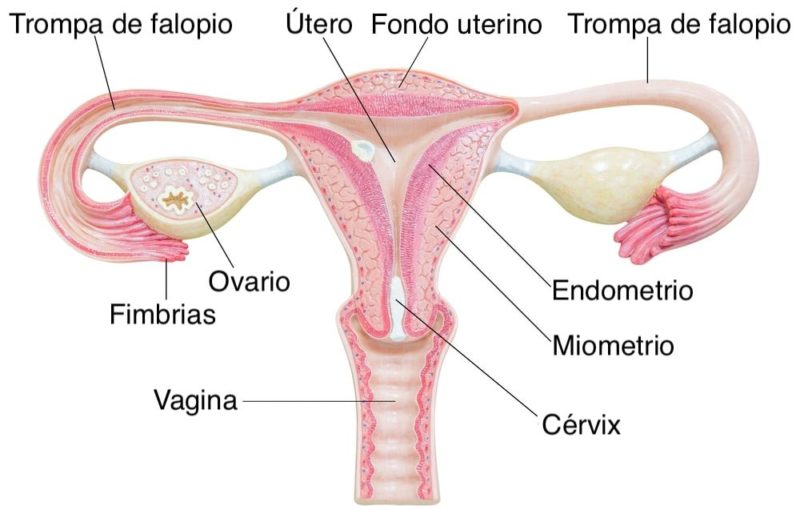
For its part, the reproductive system of women is also made up of several organs, all internal, unlike men. We refer to:
- The labia majora and minora. Which are the folds of skin and mucosa visible to the naked eye from the outside, covering and protecting the entrance to the vagina and the woman's body.
- The clitoris. The head or glans of which is located between the lips at the top of the vulva, it is an organ whose only function is to provide sexual pleasure to women. It has thousands of nerve endings and extends along the labia majora, the perineum and the lower third of the vagina.
- The vagina. It is the passage that connects the outside of the female body with the entrance to the uterus. It is a muscular region, normally narrow, whose function is to receive the penis and communicate the discharge of semen to the internal regions where fertilization occurs.
- The cervix. It is the entry point from the vagina to the uterus, located at the end of the vagina. It is a flexible, thin region, about three centimeters long or so.
- The uterus. Also called the womb, it is the space where fertilization occurs and the zygote attaches to the walls, to make way for the development of an embryo, that is, what will later become a baby. It is covered by the endometrium, its inner mucosa, which is renewed month by month, thus giving rise to menstruation. The uterus is composed mostly of muscles, is approximately pear-shaped, and its size changes as more space is required to accommodate the fetus during pregnancy.
- The ovaries. That there are two, located one on each side of the uterus, would be the female equivalent of the testicles: they generate the sexual hormones that allow development (estrogen and progesterone, particularly) and also the sexual cells that are found with the male cells. inside the uterus, the eggs. An egg is released from the ovaries each month and descends towards the uterus, where it may or may not be fertilized, and therefore may become a zygote or may be discarded with menstruation.
- The fallopian tubes. Also arranged in pairs, are the ducts that connect the ovaries and the uterus, through which an egg descends each month.
Intercourse and fertilization
The meeting between a man and a woman to begin the reproductive process is called intercourse or sexual relationship. Both individuals must be in a state of sexual excitement: the penis must be erect and the vagina lubricated, so that penetration occurs easily and painlessly.
There a series of movements occur that stimulate the abundant nerves of each sexual organ, leading to climax and orgasm, which is a set of intense sensations of pleasure. During orgasm the semen is expelled of the man's body, producing ejaculation.
Sperm travel in semen which, helped by the vaginal contractions of climax, move towards the uterus and are received by the expectant egg. Just one of the millions of them in a single ejaculation enters the interior of the egg and fertilization occurs which is the start of playback.
Eventually, the same egg can be fertilized by two sperm, thus producing a twin pregnancy.
Pregnancy
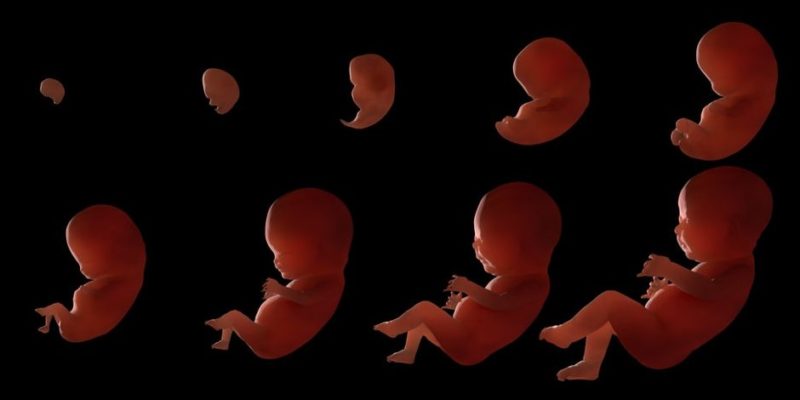
pregnancy is the stage during which the fertilized egg, now called the zygote, begins to grow. From the beginning it is rapidly subdivided, going through different stages of complexity, such as the morula, blastula or gastrula, through continuous processes of mitosis.
Eventually, the set of cells is enough to begin a delicate process of specialization, until an embryo is formed, that is, a potential human being.
Embryos are made up of three layers of cells: endoderm, ectoderm and mesoderm, each of which will give rise throughout the nine months of pregnancy to different parts of the human body of the new individual.
During this entire stage, The menstruation of the female body is suspended and the bulge of her belly begins as more and more space is required for the embryo, which from a certain moment on will already have a defined human shape and will be called a fetus.
During this entire process The embryo is kept alive by the maternal body, through the umbilical cord. This affects the maternal metabolism and, as the term of pregnancy approaches, it prepares her body for childbirth and to begin breastfeeding, filling the breasts with milk with which to nourish the newborn.
Delivery
Pregnancy ends, ideally, with childbirth: the expulsion of the newborn through the birth canal that is, through the vagina, which is capable of widening and rearranging itself to allow passage.
This process can be more or less painful, and more or less fast, and culminates with the delivery of the baby and posteriorly of the sac that surrounded it inside the uterus, called placenta. Once the umbilical cord is cut, the new human being will have taken the first step towards an independent and totally new life, outside the maternal body.
Continue with: Animal reproduction
References
- “Reproduction” on Wikipedia.
- “Human reproduction” in the Living Room Project.
- “Human reproduction” in Educ.ar.
- “Human reproduction” in ICT Resources.
- “Welcome to the Reproductive System” (video) on Khan Academy.
- “Human reproductive system” in The Encyclopaedia Britannica.



